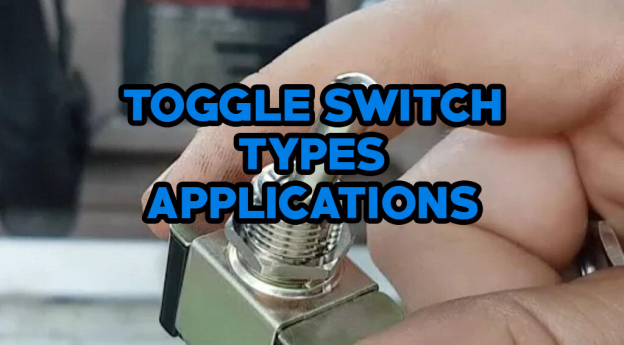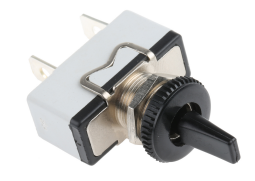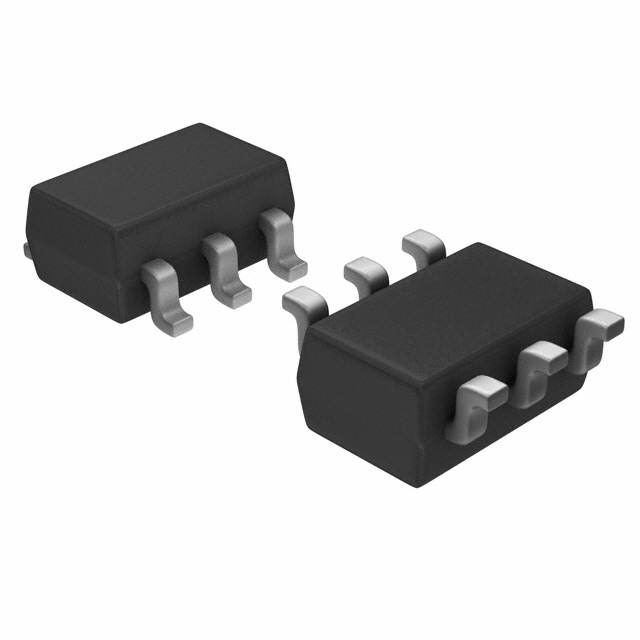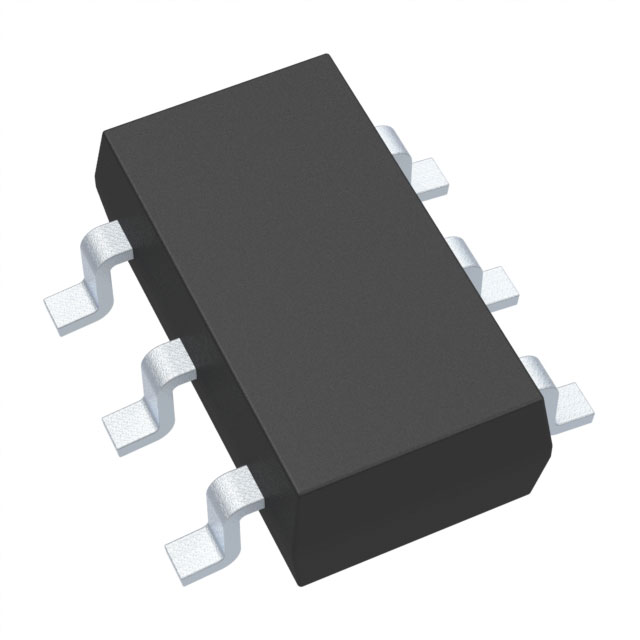

What is a Toggle Switch: Types, and Applications (2025 Guide)

What is a Toggle Switch
By manually flipping a lever or switch arm, users can control the flow of electricity in a circuit with a toggle switch. From household appliances to automotive systems to industrial machinery and control panels, toggle switches are known for their reliability and ease of use. They are popular for both aesthetic and functional reasons due to their straightforward design that clearly indicates the switch's status. Toggle switches play a vital role in everyday operations in a variety of ways. This article explores the different types, their working mechanisms, and their varied applications. Moreover, you can also learn about Ceramic Capacitors and Air Conditioner Capacitors too.
What is Toggle Switch?


Toggle Switch
An electrical toggle switch opens and closes an electrical circuit by moving a lever or handle. An electrical contact switch usually consists of a body, a lever, and an arm. Electricity flows through the circuit when the lever is flipped to one side; flipped the other way, the contacts are disengaged, interrupting electricity flow. The simplicity of toggle switches enables users to feel the switch's position with tactile feedback. Designed for a variety of electrical ratings and environments, they are available in a variety of sizes and configurations.
Toggle switches are available in various configurations, including single-pole single-throw (SPST), double-pole double-throw (DPDT), and triple-pole triple-throw (TPDT). The SPDT switch has two positions (on/off), whereas the SPST switch controls one circuit with two inputs and two outputs, allowing for more complex electrical system control. Users can reverse the polarity of the connection with DPDT switches, which can control two separate circuits. Consumer electronics, automotive controls, industrial machinery, and household lighting use toggle switches because of their versatility and reliability. Due to their easy operation and clear visual indication of on/off status, they are widely used in daily life.
Types
Single-Pole Single-Throw (SPST) Toggle Switch
There are two positions on the SPST toggle switch: on and off. This device controls a single circuit, such as a light fixture or basic electrical device that needs to be turned on and off. If it is flipped one way, the circuit is closed and current flows; if it is flipped backwards, the circuit is open and current is interrupted. For applications that require straightforward control, SPST switches are ideal because of their simplicity and ease of use.
Single-Pole Double-Throw (SPDT) Toggle Switch
By connecting a single input to one or two outputs, SPDT toggle switches are more flexible than SPST switches. Three terminals are found on this device: a common terminal, a second output terminal, and a third common terminal. Circuits can be connected to either of the two outputs based on the position of the toggle. Users can use SPDT switches to switch between two different circuits or devices. In situations where two different operations need to be toggled, fan speed controls, light dimmers, or other switches can be used.
Double-Pole Single-Throw (DPST) Toggle Switch
In contrast to SPST switches, DPST toggle switches can simultaneously control two separate circuits. For each circuit, there are two terminals. Flipping the lever on or off simultaneously turns on and off both circuits. This type of switch is especially useful when two lines of an electrical device must be disconnected at the same time for safety reasons. In household appliances, HVAC systems, and when full power disconnection is necessary, they are commonly found.
Double-Pole Double-Throw (DPDT) Toggle Switch
With DPDT toggle switches, two separate circuits can be controlled with different outputs. A 6-terminal SPDT switch can be combined into one unit with six terminals. Multi-configurations are possible with this type, including reversing polarity. Applications in which the user needs to direct signals or power to different outputs, such as in robotics, motor control systems, and audio equipment, commonly use DPDT switches.
Momentary Toggle Switch
As long as the toggle switch is held in the "on" position, it will make contact only during that time. Switches return to their default "off" state when the lever is released. A doorbell, start button in a car, or emergency stop button are all applications where these switches are used. There are two types of momentary switches: SPST and SPDT, which allow momentary activation and return to "off."
Illuminated Toggle Switch
The toggle switch is illuminated with a light source, usually an LED, to indicate its status (on or off). Users are able to easily determine if a device is powered on thanks to this feature, which makes it easier to use in low-light conditions. In household appliances, automotive applications, and control panels with a high level of visibility, these switches are commonly used. A variety of configurations are available (SPST, SPDT, etc.).
Weatherproof Toggle Switch
Designed to withstand the elements, weatherproof toggle switches feature enclosures that protect them from moisture, dust, and other elements. They are often used in outdoor lighting, irrigation systems, and other weather-exposed applications. A durable material and reliable sealing mechanism ensure reliable performance and longevity of these switches.
Applications
Household Lighting Control
A toggle switch is often used to control lighting in the home. Lights, lamps, and ceiling fans are usually operated by SPST toggle switches, which provide a straightforward method to turn on and off the lights. SPDT toggle switches may also be configured in three-way configurations, allowing users to control one light source from multiple places in larger rooms or hallways. Because toggle switches are both convenient and energy efficient, they are a popular choice in residential settings because of the tactile feedback and visual indication of their position.
Automotive Applications
Headlights, wipers, and auxiliary lighting may all be controlled through toggle switches in automotive systems. Headlights and fog lights can be turned on and off using SPST switches in a vehicle's dashboard. Power windows and convertible roofs are also enabled by DPDT toggle switches by reversing motor polarity. Toggle switches are suitable for automotive environments due to their durability and robustness, which allows them to withstand vibrations, temperature variations, and moisture exposure.
Industrial Machinery Control
Machines and equipment are controlled by toggle switches in industrial settings. A DPST or DPDT switch allows operators to switch between different operational states efficiently when managing motors, conveyors, or automated systems. During maintenance and troubleshooting, the ability to turn off live and neutral lines enhances safety. Control panels also use toggle switches for starters, stoppers, and modification of machine operations. Industrial automation and machinery management rely on their reliability and simplicity.
Computer and Electronics Equipment
Power control and input selection are commonly handled by toggle switches in computers and electronics. The switches are often used in power strips, computer cases, and audio equipment where users need a simple method of switching between input sources or turning devices on and off. Especially in environments with multiple electronic components, illuminated toggle switches provide visible feedback regarding a device's status. Consumer electronics benefit from toggle switches' compact size and ease of installation.
Control Panels and Instrumentation
Various industries, including telecommunications, aviation, and manufacturing, rely on toggle switches for their control panels and instrumentation. For example, toggle switches handle critical functions like starting and stopping equipment, setting operational modes, and managing alarms. Their robust design ensures reliable operation even in demanding environments, while tactile feedback lets operators confirm switch status quickly. Additionally, toggle switches can be customized to improve the clarity of the user interface in complex control systems.
Home Appliances
Toggle switches are widely used on home appliances for ease of operation. The power is often controlled by SPST switches on kitchen appliances like toasters, coffee makers, and microwaves. Users can easily activate or deactivate these appliances with these switches. Fans and heaters, for example, use toggle switches when quick and easy control is needed. In everyday appliances, they are suited due to their long lifespan and durability.
Outdoor and Garden Equipment
Power tools, irrigation controllers, and landscape lighting systems all use toggle switches. This type of application requires weatherproof toggle switches, as they protect the switch against moisture, dirt, and environmental factors. With a simple toggle action, outdoor lighting can be controlled or water pumps can be activated. Outdoor toggle switches serve a variety of purposes, enhancing convenience and functionality.
Military and Aerospace Applications
It is essential for military and aerospace equipment to be reliable and robust. It is common to see toggle switches on control panels of aircraft, military vehicles, and defense systems. They are tested under extreme temperatures and vibrations to ensure that they can withstand harsh conditions. They make quick and reliable control possible in situations of high stakes. Assuring clear identification in complex systems is also possible with customized toggle switches.
Wrapping Up
The toggle switch provides a safe, efficient, and reliable way of controlling a variety of electric systems, including household lighting, automotive systems, industrial machinery, and aerospace technology. They are versatile tools for various environments since they come in different types, such as SPST, SPDT, DPST, and DPDT configurations. Toggle switches ensure efficient management of electrical systems with their tactile feedback, clear visual indicators, and robust designs. Despite technological advancements, toggle switches remain an integral part of modern electrical engineering and design, used in both everyday appliances and high-tech industrial applications.
Subscribe to JMBom Electronics !












